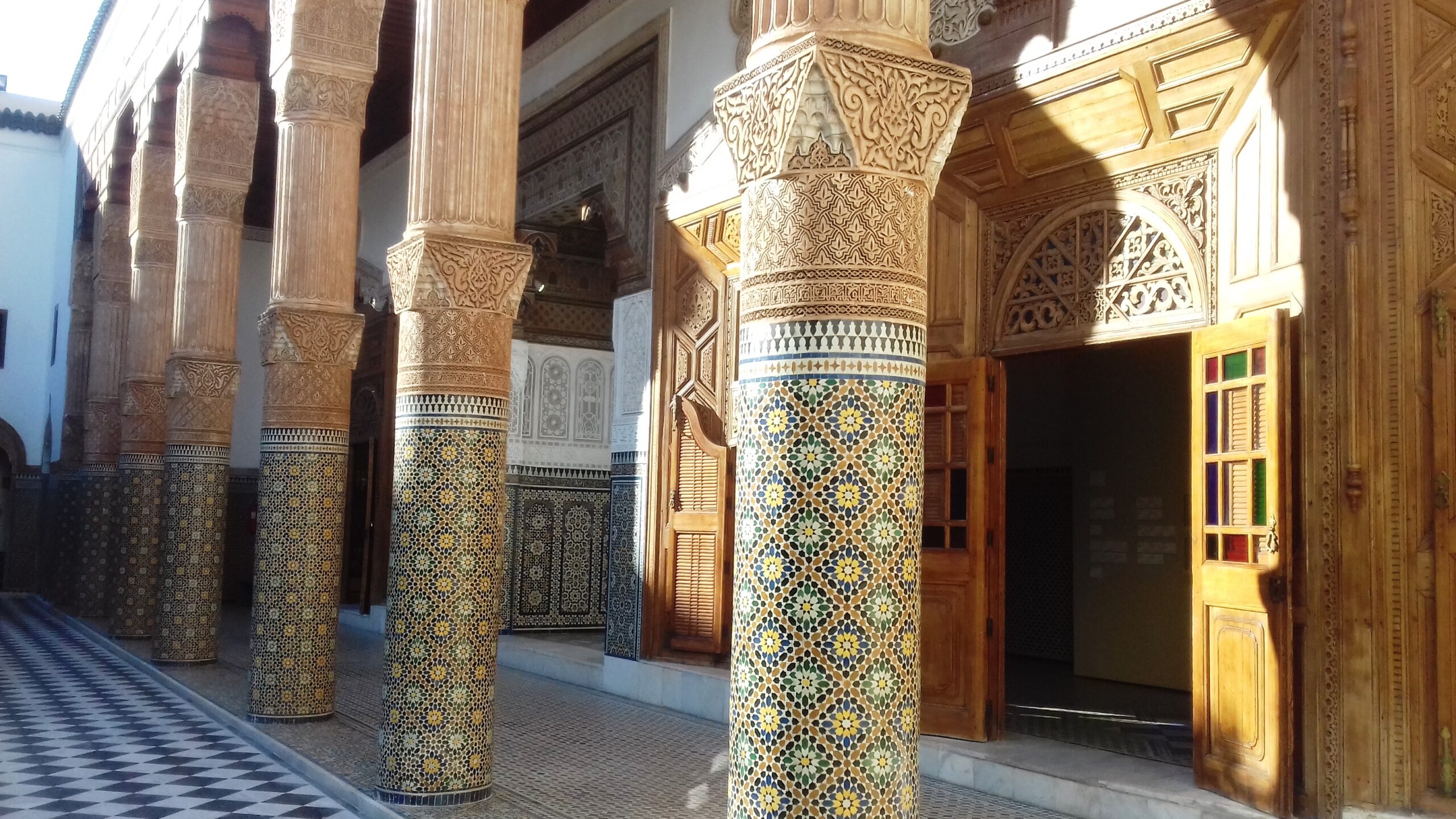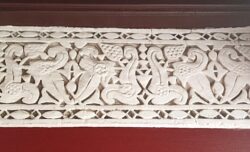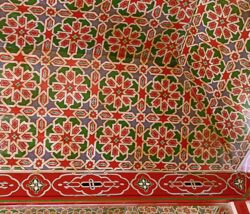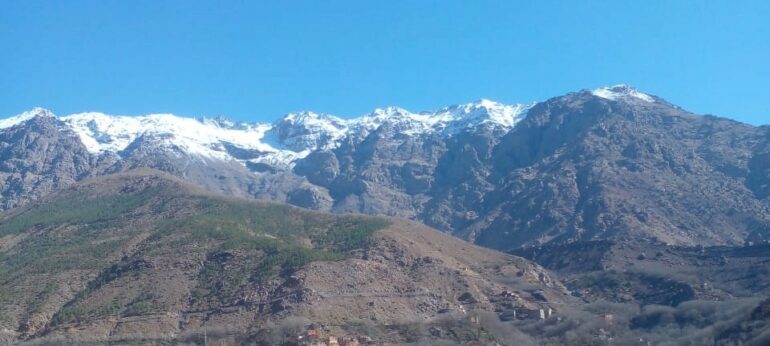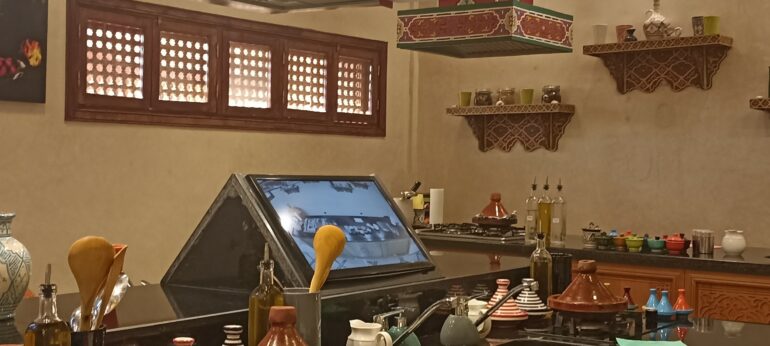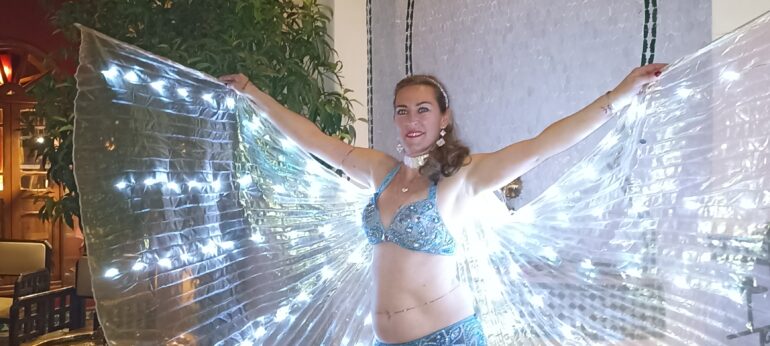MAKE BEAUTY
“Wow, look at that!” Exclamations of surprise and amazement arise in the various rooms of a palace, in a riad, in a madrasa… Tourists are admiring the extraordinary colour palette of the zillij, the chiseled plaster friezes, the carved woodenstalactites. They take many pictures and look more closely at the interlacing forms, discovering new perspectives. All crafts are customs and colours of civilization. Moroccan decorative arts reached their zenith during the Arab-Andalusian period but the skill of craftsmen has miraculously survived though the ages. Connected to their ancestors, Moroccan artisans are still able to adorn palaces or mosques, private houses, riads… Many restorations of houses in the medinas have contributed to the revival of traditional materials and techniques. The maallems (master craftsman) were patiently waiting for the right hour, a new era full of new songs. Greatly respected for their knowledge, they can today teach young apprentices and reopen workshops. A dynamic sector, boosted at the same time by the respect of the historical legacy and by the new possibilities that contemporary architects or designers create. For instance Ricardo Bofill, reinterpreting an ingredient such as Tadelakt for a modern use in his Twin Center in Casablanca.
ZILLIJ
It is an essential art form of the Moresque décor, probably inspired by the Roman mosaic. It is always fascinating to see the zillij master delicately cutting with his small hammer (menqach) the glazed claytiles (often coming from Fez), into tiny individual shapes, squares, triangles, octagons, or stars. They will be placed one by one on a bed of plaster. The artist’s eye will then create simple or extraordinary intricate mosaic design to decorate the walls, friezes, table tops, fountains.
New colours have been gradually added to the traditional spectrum. Blue, green, honey,yellow, red, black, white…In order to restore and replicate a damaged pattern, the craftsman can trace it on kraft paper by rubbing leaves of mint on the surface. You can sometimes easily feel dizzy when you enter into these endlessly repeated geometric figures. Precision versus confusion, disturbing vision.
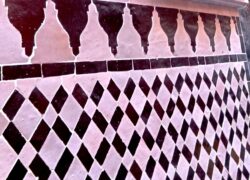
CARVED PLASTER GYPSUM
The floral and vegetal scrolls, the arabesques, the calligraphy signs, the embroidered lace-like patterns leave everyone speechless. Like a virtuoso violinist, the plaster carver’s skill seems to have no limits and his creative expression twirls endlessly. To produce this plaster, the craftsman lays down a layer of stucco. It is carefully smoothed before being traced. A unique stencil is used to mark the design. When the still-damp stucco has begun hardening the craftsman meticulously gouges out the unique design using a small hammer and narrow chisels.
On the column capitals, in the cornices, underarches we can find Muqarnas,a very complex patternevoking stalactites.
To the question: Why are the old stucco works thicker?
Just one answer: because craftsmen were paid according to the amount of plaster dustproduced in a day’s work!
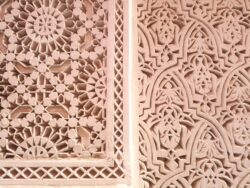
WOOD
The woodworkers’guild is particularly respected in Morocco. The profession of woodworking has been organized with strict codes and rules to control working practices. These corporations often pass membership through families from generation to generation. The craftsmen work with indigenous woods like cedar, white cedar, lemon, walnut, Orange, pine, apricot, and imported woods like ebony, oak, beech or mahogany.
In the region of Essaouira, thuya wood is used to make different objects while cedar wood reigns in the palaces or in the riads in Marrakech or Fez.
There are various specialized masters in woodworking. The carver will use a gouge and a chisel to create his previously drawn ornaments on the doors, the friezes, furniture and ceilings. The inlayer or marketer assembles various materials including ivory, tortoise shell, mother-of-Pearl, ebony or metal and precious woods according to the proposed design to create mosaics. The turner knows the secrets behind the ornate screens, known as mushrabiyahs, formed by a series of turned wooden bobbins glued or nailed into a grid. Mushrabiyas adorn the windows, balconies, loggias, and once allowed women to see without being seen. The word derives from the name of cooled water jugs, the michraba (chrab means drink), usually hidden and kept cool by the shade of these screens.
Last but not least the zouaq artist draws and paints his cedar wood panels of spiralling and interlaced foliage mingled with geometric motifs as seen in many domed and vaulted ceilings, on doors. He holds his brush made from donkey hair. His wrist is supported by the other hand stuck to the table. The ornamental vocabulary has been established for centuries of tradition with its polychromic codes.
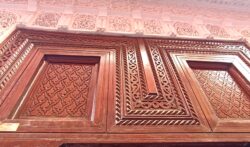
TADELAKT
The word Tadelakt derives from the Berber verb “dlleq” meaning to knead or caress. Thus, it is not surprising that it is the traditional seamless coating of hammams and bathrooms of the restored riads in Morocco. Only a great patience allows to obtain this “golden plaster” and its rustic and sensuous appearance.It is a unique blend of marble dust, limestone sand from the area around Marrakech that creates a decorative, durable, very high polished, slightly wavy and velvety smooth finish.The age-old traditional application passed from master to apprentice involves the plaster, once set, being polished with a flat river stone then painted with a glaze of egg whites and polished again with a natural soft, black olive oil soap at once hard as stone and soft as silk. Natural pigments can be added. The effect is always magical!
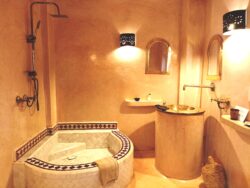
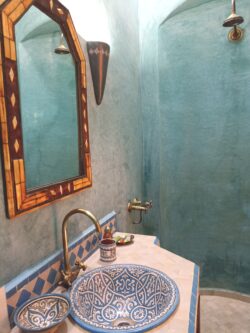
A new generation of craftsmen is now appearing, which, hopefully, has beautiful decades of work ahead of it. Their songs, typical to each corporation, can be heard again on construction sites.
For more friendliness, a mint tea is always available, and always warm!

